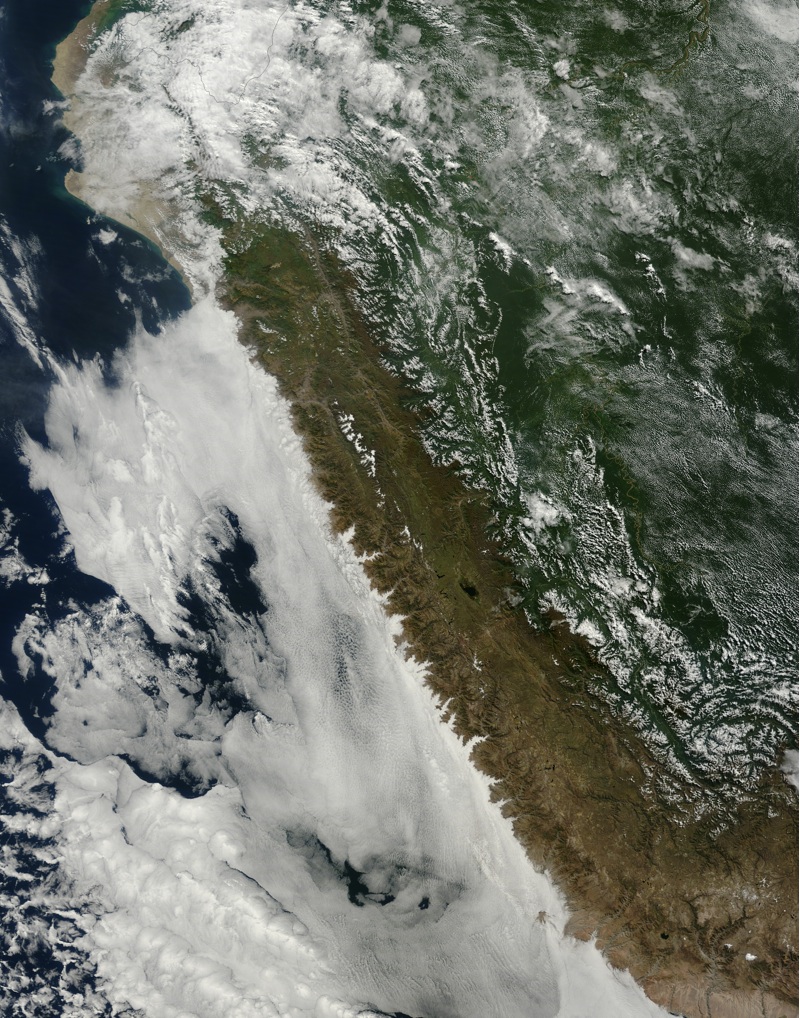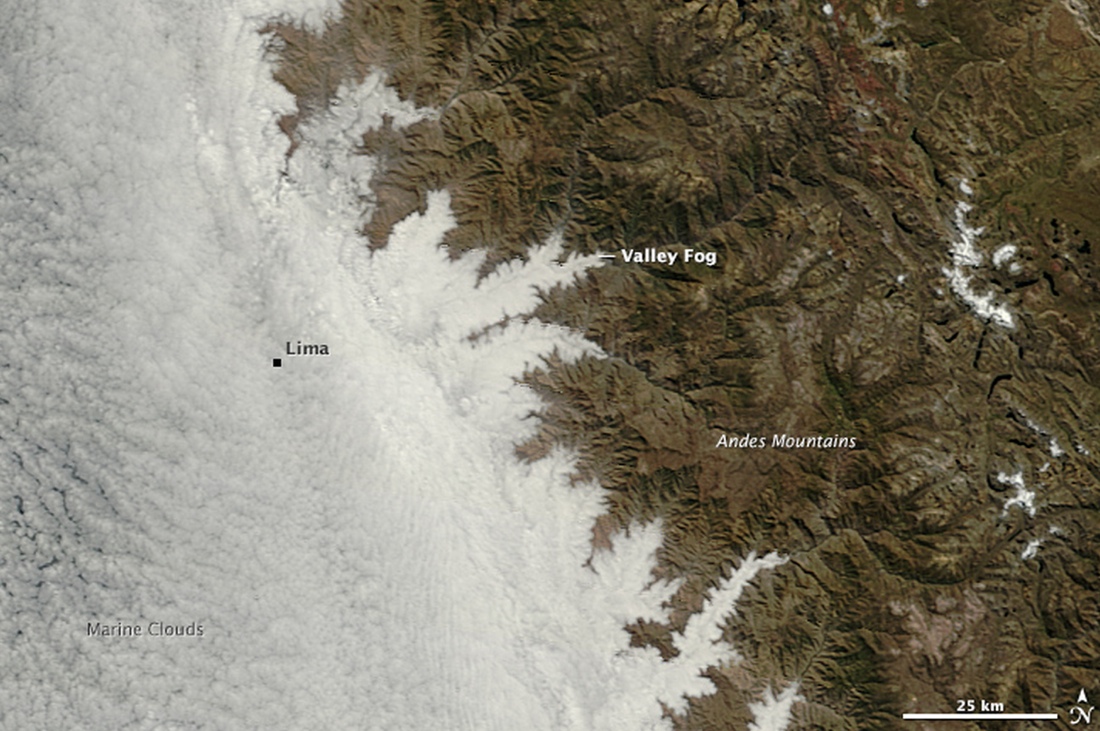Clouds Over Peru: Upwelling Causes 'Bumpy' Fog Along Coastline

Low winter fog obscures the coastline of Peru in a new image from NASA's Terra satellite.
The bird’s-eye view of coastal Peru comes from the Moderate Resolution Imaging Spectroradiometer on that satellite, which whooshed over the region on June 7, according to NASA Earth Observatory. The view that day was one of creeping bumpy clouds, a common sight in the winter along the Peruvian coast.
The cold Humboldt Current brings chilly water to the coast; meanwhile, upwelling currents pull deep, frigid water to the surface. The cold water acts to air-condition the atmosphere above, cooling the air and causing water vapor to condense as it would on the edge of a chilled glass. This condensed water vapor produces the low clouds and fog seen in the new image. [5 Strange Sightings in the Peruvian Amazon]
The cool offshore currents of Peru help to keep the country extremely arid. The cool air wrings out its moisture as fog along the coast, and is thus dry by the time it travels inland. The farther north the current reaches, the warmer it gets, so northern Peru is less arid than southern Peru.

The clouds seen in this image are called marine stratocumulus, according to the Earth Observatory. Two types, open-cell and closed-cell, are visible. The closed-cell clouds are the ones that simply look like puffy white clouds. Open-cell clouds look like clear sky enclosed by cloudy outlines. These form when drizzle falls, according to the Earth Observatory.
Peruvians call their low winter clouds camanchaca, or garúa, and shiver through the cold, moist conditions that this weather brings. On June 7, the Terra satellite instrument caught the capital, Lima, under a blanket of clouds. Fog filled the low valleys of the Andes Mountains just inland of the city.
The aridity of Peru is partially responsible for the oldest human mummies ever found. The oldest known is a child mummy dating back to 5050 B.C., according to National Geographic. A desert climate naturally preserves bodies. As in Egypt, this natural preservation probably encouraged ancient peoples to take things a step further, scooping out organs and removing flesh only to replace these parts with straw, reeds, paste and paint.
Sign up for the Live Science daily newsletter now
Get the world’s most fascinating discoveries delivered straight to your inbox.
Mummification continued for thousands of years in the region. In April, archaeologists announced the discovery of a tomb packed with 171 mummies in the Cotahuasi Valley of Peru. Those bodies dated back to between A.D. 800 and A.D. 1000.
Follow Stephanie Pappas on Twitter and Google+. Follow us @livescience, Facebook & Google+. Original article on Live Science.

Stephanie Pappas is a contributing writer for Live Science, covering topics ranging from geoscience to archaeology to the human brain and behavior. She was previously a senior writer for Live Science but is now a freelancer based in Denver, Colorado, and regularly contributes to Scientific American and The Monitor, the monthly magazine of the American Psychological Association. Stephanie received a bachelor's degree in psychology from the University of South Carolina and a graduate certificate in science communication from the University of California, Santa Cruz.









